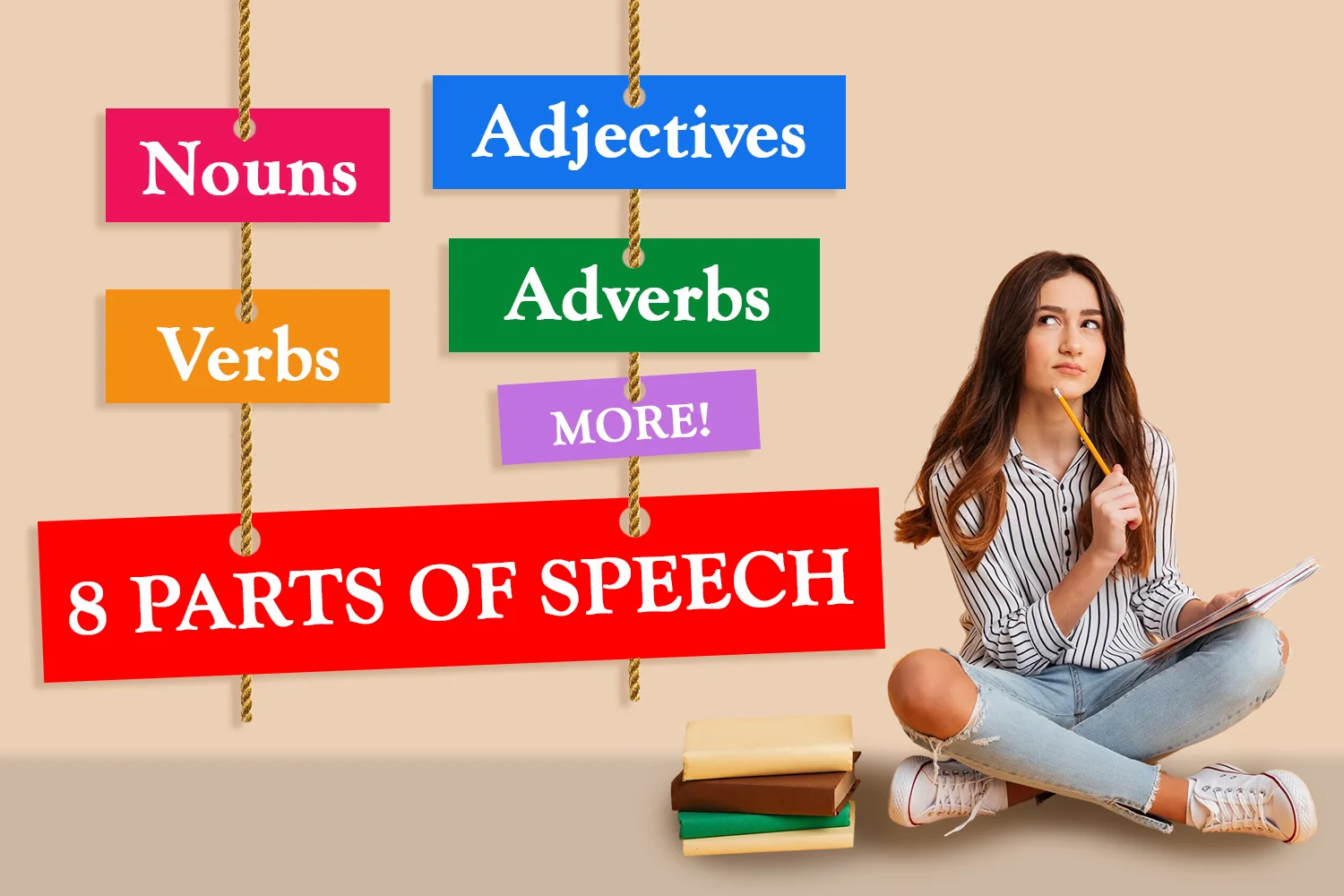Have you ever stared at a sentence and wondered why certain words feel like the stars of the show while others play supporting roles? If you’re a beginner learner dipping your toes into English grammar, you’re not alone.
Grammar can seem like a tangled web, but breaking it down into the eight parts of speech makes it feel like a fun puzzle rather than a chore. In this article, we’ll focus on how to identify nouns, verbs, adjectives, and adverbs and other core players that bring sentences to life while also touching on the other four to give you a complete picture.
Think of parts of speech as the ingredients in your favorite recipe: nouns are the main items, verbs the actions that cook them, adjectives the spices that add flavor, and adverbs the tweaks that make everything just right.
Why bother learning this? Well, mastering these basics like how to identify noun, verb, adjective, adverb and the others will supercharge your reading, writing, and speaking skills. You’ll spot errors in your essays, understand song lyrics better, and even craft fun stories.
By the end, you’ll have tools to identify them effortlessly, plus some unique twists like how parts of speech sneak into pop culture or evolve in digital slang. Let’s embark on this grammar adventure. It’s easier than you think!
The 8 Parts of Speech Lesson Starts
Think of the 8 parts of speech as team members in a soccer game, each has a job but they work together to score. Here’s a quick overview with easy grammar identification tips and examples:
- Nouns: Names for people, places, things, or ideas.
- Pronouns: Stand-ins for nouns to avoid repetition.
- Verbs: Words showing action or state of being.
- Adjectives: Descriptors that tell more about nouns or pronouns.
- Adverbs: Modifiers that add details to verbs, adjectives, or other adverbs.
- Prepositions: Words that show relationships, like location or time.
- Conjunctions: Connectors that link words or clauses.
- Interjections: Exclamations that express emotion.
Most online guides stop at basic definitions, but here’s something fresh: think of parts of speech as evolving superheroes.
In old English tales, nouns were rigid kings, but today, in texts like “DM me” (where “DM” is a noun turned verb), they’re flexible shapeshifters. This adaptability makes English exciting, and we’ll explore that later.
Although this article focuses more on how to identify noun, verb, adjective, adverb, but not much on the other supporting players is only the beginning of our adventure. So buckle up and let’s dive in to the main parts!

The Starting Four: How to Identify Noun, Verb, Adjective, Adverb
Nouns: The Foundation of Every Story
Nouns are like the main characters in a movie—they name people, places, things, or even abstract ideas. Without them, sentences would be empty stages. To identify a noun, ask: “Does this word name something I can picture or feel?” Common clues include articles like “the” or “a” before them, or capitalization for proper nouns.
Sure, you’ve heard of common nouns (like “dog”) and proper nouns (like “Fido”). But let’s add a twist: collective nouns, which name groups as one unit, like “team” or “flock.” Imagine a “murder of crows” that’s not just a noun; it’s a poetic way to describe a group, adding mystery to your writing.
Then there are abstract nouns, like “happiness” or “freedom,” which you can’t touch but feel deeply. In beginner guides, these are often glossed over, but here’s a unique angle: abstract nouns in dreams. Ever dreamed of “success”? It’s a noun that motivates real actions!
Types of Nouns
| Types of Noun | What It Means | Examples | Example Sentence |
| Proper | Names of a specific person, place, or thing (always capitalized) | Maria, London, Monday, Coca-Cola | Maria lives in London. |
| Common | Names of a general person, place, or thing | girl, city, day, | The girl went to the city. |
| Concrete | Something you can see, touch, taste, hear, or smell | apple, dog, music, | I ate an apple this morning. |
| Abstract | Names an idea, feeling, or quality (not physical) | love, happiness, freedom, | Love makes life beautiful. |
| Collective | Names of a group of people, animals, or things | team, family, class, flock | Our team won the game. |
| Countable | Can be counted (has singular and plural forms) | book/books, apple/apples | I have three books. |
| Uncountable | Cannot be counted (no plural form) | water, sugar, air, information | She needs some water. |
| Compound | Formed by joining two or more words | toothpaste, bus stop, basketball | I bought a new toothbrush. |
How to Spot Nouns in Action
To identify nouns, try the “replacement test”. Swap it with “thing” or “person.” If it fits, it’s likely a noun.
Example: “The cat chased the mouse.” Replace “cat” with “animal”. Still makes sense? Yes!
For fun, let’s look at nouns in brand names.
“Google” started as a noun (a search engine) but now verbs too (“I googled it”). This shows how nouns evolve, making language dynamic for beginners to play with.
Tip: Remember: nouns are specific (“apple”), pronouns general (“it”). Nouns are the “WHATs” in the sentence.

Verbs: The Action Heroes
Verbs are the action stars—they show what’s happening or existing. Without verbs, sentences stall like a car without gas. To identify one, ask: “Is this word showing doing or being?” Look for endings like “-ing” (running) or “-ed” (jumped).
Varieties of Verbs: Action, Linking, and More
Action verbs are straightforward: “run,” “eat,” “dance.” Linking verbs connect subjects to descriptions, like “is” or “seems.” But here’s an under-discussed type: modal verbs like “can” or “might,” which add possibility.
| Types of Verb | What It Means / Use | Examples | Example Sentence |
| Action Verbs | Show physical or mental action | run, eat, write, think | She runs every morning. |
| Linking Verbs | Connect the subject to information about it (no action) | am, is, are, was, were, seem, become | He is a teacher. |
| Helping (Auxiliary) Verbs | Help the main verb show tense or possibility | am, is, are, was, were, have, has, will, can, should | She is studying English. |
| Transitive Verbs | Need an object to complete the meaning | eat, make, buy, read | He made a cake. |
| Intransitive Verbs | Do not need an object; the action stands alone | sleep, cry, arrive, go | The baby cried loudly. |
| Regular Verbs | Form their past tense by adding -ed | walk → walked, play → played | They played soccer yesterday. |
| Irregular Verbs | Change form completely in past tense | go → went, eat → ate, see → saw | We went to the park. |
| Finite Verbs | Show tense and subject agreement | go, eats, ran | He goes to school every day. |
| Non-Finite Verbs | Do not show tense (infinitive, gerund, participle forms) | to go, going, gone | To read is my hobby. |
| Modal Verbs | Show possibility, necessity, or ability | can, could, may, might, must, should, will, would | You should study harder. |
| Phrasal Verbs | Verb + preposition/adverb that changes meaning | look after, give up, take off | She gave up smoking. |
| Causative Verbs | Show that someone causes another person to do something | make, have, let, get | The teacher made us clean the room. |
Verbs in storytelling tenses. Look at the table below for a reference.
| Verb | 🔵 Past (Before Now) | 🟢 Present (Now) | 🟠 Future (Later) |
| Go | I went to the park yesterday. | I go to the park every morning. | I will go to the park tomorrow. |
| Eat | She ate breakfast at 7 a.m. | She eats breakfast every day. | She will eat breakfast later. |
| Study | They studied for the exam last night. | They study hard every week. | They will study for the test tomorrow. |
Identification Tricks for Beginners
The “time test”: Verbs often change with time (“walk, walked, walking”). If it does, it’s a verb.
Don’t confuse verbs with adverbs. Verbs do the work; adverbs describe how. Verbs keep language moving; master them, and your stories come alive.
Fun fact: English has over 1,000 irregular verbs, like “go-went-gone,” from ancient roots.

Adjectives: The Colorful Describers
Adjectives add flavor by describing or modifying nouns and pronouns. They tell us which one, what kind, or how many.
Types of Adjectives
| Types of Adjective | What It Means / Use | Examples | Example Sentence |
| Descriptive | Describes the quality or appearance of a noun | beautiful, tall, red, happy | She has a beautiful smile. |
| Quantitative | Shows how much or how many | some, few, many, little, several | He has many friends. |
| Demonstrative | Points to specific people or things | this, that, these, those | These cookies are delicious. |
| Possessive | Shows ownership or possession | my, your, his, her, our, their | That’s my bag. |
| Interrogative | Used to ask questions about nouns | which, what, whose | Which color do you like? |
| Distributive | Refers to individuals in a group | each, every, either, neither | Each student has a book. |
| Proper | Formed from proper nouns (starts with capital letter) | American, Chinese, English, Filipino | I love Italian food. |
| Numeral | Shows number or order | one, two, first, second | She has two cats. |
Adjectives often answer, “what kind?” “which one?” or “how many?” They usually come before nouns or after linking verbs. For easy grammar identification, swap them: If the sentence still works but changes detail, it’s an adjective.
Many end in -y, -ful, or -ous, like “happy” or “beautiful.”
Example: In “The red apple is juicy,” “red” and “juicy” describe the apple. “The fluffy cloud floated lazily.” “Fluffy” describes the cloud.
Adjectives engage our five senses—sight (blue), sound (loud), touch (soft), taste (sweet), smell (fragrant).

Adverbs: The Sneaky Enhancers
Adverbs modify verbs, adjectives, or other adverbs, telling how, when, where, or to what extent. They’re the detail boosters.
Types of Adverbs
| Type of Adverb | What It Shows | Examples | Example Sentence |
| Manner | Shows how an action happens | slowly, quickly, carefully, | She speaks slowly. |
| Time | Shows when an action happens | now, yesterday, soon, | I will call you tomorrow. |
| Place | Shows where an action happens | here, there, everywhere, | The kids are playing outside. |
| Frequency | Shows how often something happens | always, often, sometimes, | He always drinks coffee in the morning. |
| Degree | Shows how much or to what extent | very, too, quite, almost | She is very happy today. |
| Reason | Shows why something happens | therefore, thus, hence, consequently | He was tired; therefore, he went to bed early. |
| Interrogative Adverb | Used to ask questions | when, where, why, how | Why are you late? |
How to Identify an Adverb Like a Pro
Many end in -ly, like “quickly.” Ask “how?” “when?” “where?” or “how much?”
Examples:
In “She runs quickly,” “quickly” modifies “runs.”
“He whispered softly in the dark room.” “Softly” tells how.

The Supporting Players: Pronouns, Prepositions, Conjunctions, and Interjections
Pronouns: The Stand-Ins
Pronouns replace nouns to avoid repetition. They’re shortcuts like “he,” “she,” “it,” or “they.”
How to Identify a Pronoun
Pronouns refer back to nouns.
Personal ones: I, you, he, she, it, we, they.
Possessive: mine, yours, his, hers, ours, theirs
“Sara lost her book; she found it later,” “her,” “she,” and “it” stand in.
That book is mine.
Other Types: Reflexive (myself), demonstrative (this), interrogative (who), relative (that).
Examples:
“They went to the store.” – “They” replaces names.
She is my best friend. – “She” replaces the proper name for example “Sara or Jane”.
He hurt himself while playing.
Who is your teacher?
Someone is at the door.
Want to fix your grammar? Learn the rules for using articles in English and avoid common mistakes.
Prepositions: The Connectors
Prepositions show relationships, like time, place, or direction. Words like “in,” “on,” “at.”
How to Identify a Preposition
They link nouns/pronouns to other words, forming phrases.
In “The book is on the table,” “on” shows location.
Common: about, after, before, by, for, from, in, of, on, to, at, with, into, across, through, toward, because of, due to, for.
Examples:
“She walked through the park.” – “Through” indicates direction.
The game was canceled because of the rain. – “Because of” indicates the cause or reason
The class starts at 8 a.m.
The cat is on the table.
The cake was baked by my mom.
Talking business? Master 50 common business idioms to sound professional in English.
Conjunctions: The Team Builders
Conjunctions join words, phrases, or clauses. Like “and,” “but,” “or.”
How to Identify a Conjunction
They connect: Coordinating (and, but), subordinating (because, although), correlative (either…or), conjunctive (however, therefore, moreover, consequently, meanwhile).
Conjunctions unite; use for balanced sentences.
Examples:
In “I like tea and coffee,” “and” joins.
“He ran fast but tripped.” “But” contrasts.
I wanted to go out, but it was raining.
Either you study hard or you fail.
It was late; therefore, we went home.

Interjections: The Exclaimers
Interjections express emotions, like “Wow!” or “Ouch!”
Here is a list of primary interjections:
| Interjection | Emotion / Meaning | Example Sentence |
| Wow! | Surprise or admiration | Wow! That’s a beautiful painting! |
| Ouch! | Pain | Ouch! That really hurt! |
| Ew! | Disgust or dislike | Ew! There’s something sticky here! |
| Phew! | Relief after stress or fear | Phew! That was close! |
| Whoa! | Shock, surprise, or to slow someone down | Whoa! That car is really fast! |
How to Identify an Interjection
Short, often with punctuation. Stand alone or inserted.
More Examples:
Yay! We won.
Ugh! This room smells bad.
Hi! Nice to meet you.
Alas! The hero died at the end.
Oops! I dropped my pen.

Fun Challenges: Quiz Yourself on the 8 Parts
Here’s a straightforward 3-item quiz to test your knowledge of the eight parts of speech: nouns, verbs, adjectives, adverbs, pronouns, prepositions, conjunctions, and interjections. For each sentence, identify the part of speech for each bolded word. Jot down your answers, then check the solutions below!
- Wow, the quick brown fox jumps over the lazy dog.
- She ran quickly to the store, but it was closed.
- Hey! He and I will play soccer outside tomorrow.
Answers
- Wow (interjection), quick (adjective), brown (adjective), fox (noun), jumps (verb), over (preposition), lazy (adjective), dog (noun).
- She (pronoun), ran (verb), quickly (adverb), to (preposition), store (noun), but (conjunction), it (pronoun), was (verb).
- Hey (interjection), He (pronoun), and (conjunction), I (pronoun), will (verb), play (verb), soccer (noun), outside (adverb), tomorrow (adverb)
Great job practicing how to identify nouns, verbs, adjectives, and adverbs in a sentence!
Curious about our method? Learn more about the life-changing results of our English speaking classes.
Wrapping Up: Master Grammar and Unlock Your Voice
You’ve now got the tools for easy grammar identification in the 8 parts of speech, with examples and unique insights.
Practice daily, label sentences in books or chats and watch your skills grow. Keep exploring!
If you feel tired and confused by grammar rules, EnglishFact’s beginner-friendly courses give you a solid foundation, teaching you exactly how to identify Nouns, Verbs, Adjectives, and more. Stop guessing and level up your English with true grammar confidence!
Got questions about our grammar courses? Message us on WhatsApp or sign up for a FREE TRIAL ONLINE CLASS today!




